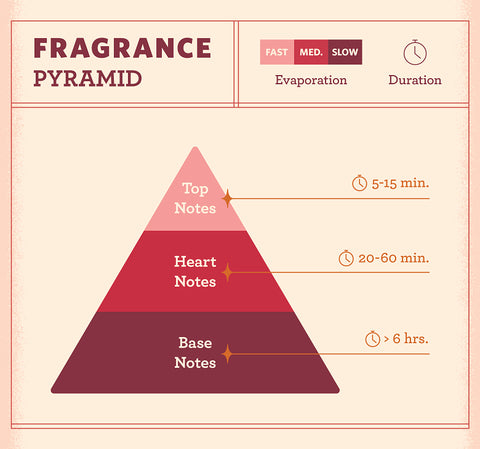The Art of Fragrance Reviewing: A Step-by-Step Guide
by leandro manuel guevarra on Mar 04, 2024

Welcome to the wonderful world of fragrance reviewing! Have you ever wondered how to describe the scents of perfumes and colognes in words? Well, you're in the right place. In this guide, we'll take you through the process step-by-step, showing you how to evaluate the different elements of a fragrance, from individual notes to the overall scent profile. By the end, you'll be equipped to share your thoughts on fragrances like a pro!

Understanding Fragrance Notes:
- Fragrance notes are like the ingredients in a recipe. They're the individual scents that make up a fragrance. To start your review, take a sniff and try to identify the different notes you can smell. Some common notes include:
- Floral notes like rose, jasmine, and lily.
- Fruity notes like citrus fruits, berries, and cherry like Cherry Perfume.
- Woody notes like cedarwood, sandalwood, and vetiver.
- Spicy notes like cinnamon, cardamom, and pepper.
Sweet notes like vanilla, caramel, and honey.
- Try to pick out these notes and describe how they smell to you. Are they strong or subtle? Fresh or warm? This will give your readers a sense of what to expect from the fragrance.
Evaluating Accords:
- Accords are combinations of fragrance notes that create a specific overall impression. As you continue your review, consider how these notes work together to form an accord. Is the fragrance dominated by a single accord, or are there several that blend harmoniously? Some common accords include:
- Floral accords: Combining different floral notes to create a bouquet-like scent.
- Citrus accords: Blending citrus fruits for a fresh and invigorating aroma.
- Woody accords: Mixing various woods for a warm and earthy fragrance.
Oriental accords: Combining spices, resins, and exotic ingredients for a rich and sensual scent.
- Pay attention to how these accords interact with each other and how they contribute to the overall character of the fragrance.
Assessing the Overall Scent Profile:
Once you've examined the individual notes and accords, it's time to step back and consider the fragrance as a whole. How does it make you feel when you wear it? Does it evoke any memories or emotions? Think about the occasion or season when you would wear this fragrance. Is it more suitable for daytime or nighttime? Summer or winter?
- Describe the overall scent profile in terms of its intensity, longevity, and sillage (how far the fragrance projects). Is it a light and airy scent that fades quickly, or a bold and long-lasting fragrance that lingers throughout the day? This will help your readers decide whether the fragrance is right for them.
Conclusion:
Congratulations! You've completed your fragrance review. By following these steps and evaluating the notes, accords, and overall scent profile, you've provided your readers with valuable insights into the fragrance. Remember to be honest and descriptive in your reviews, and don't be afraid to trust your own nose. With practice, you'll become a skilled fragrance reviewer, helping others discover their perfect scent. Happy sniffing!



